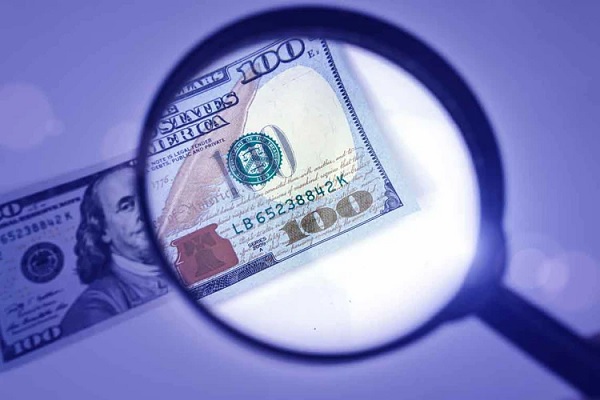
Counterfeit money is currency produced outside of the legal sanction of a state or government, usually in a deliberate attempt to imitate that currency and so as to deceive its recipient. Producing or using counterfeit money is a form of fraud or forgery, and is illegal. Detecting counterfeit currency can be challenging, as counterfeiters continue to improve their techniques. However, there are several security features and methods you can use to help identify counterfeit currency accurately.
Here are some steps to detect counterfeit currency:
Feel the Paper:
Legitimate currency is printed on special paper that has a unique texture. Counterfeit notes may feel different, either too smooth or too rough. Run your fingers over the note to get a sense of its texture.
Look for Watermarks:
Many banknotes have watermarks embedded in the paper. Hold the note up to the light, and you should be able to see a faint image or symbol that is visible from both sides of the note.
Check for Security Threads:
Most banknotes have a security thread or stripe embedded in the paper. Hold the note up to the light, and you should see a thin, embedded strip running vertically through the note. The position and appearance of the security thread vary by currency.
Inspect the Microprinting:
Genuine banknotes often contain microprinting, which is very small text that is difficult to replicate accurately. Examine the note closely with a magnifying glass to check for microprinting.
Verify the Holograms and Color-Shifting Ink:
Some currencies have holographic images or color-shifting ink that changes color when you tilt the note. Counterfeiters may have difficulty replicating these features accurately.
Examine the UV Features:
Ultraviolet (UV) light can reveal additional security features on banknotes. Invest in a UV light or use one at a bank or currency exchange office to check for UV markings, which may not be visible to the naked eye.
Compare to a Genuine Note:
If you have access to a genuine banknote of the same denomination, compare the suspect note to the real one. Look for differences in design, color, and security features.
Check for Raised Printing:
Genuine banknotes typically have raised ink that you can feel when you run your fingers over it. Counterfeit notes may not have the same tactile feel.
Look for Fine Lines and Patterns:
Inspect the note for fine lines, patterns, and details in the design. Counterfeit notes may lack the precision and sharpness of genuine notes.
Use Counterfeit Detection Pens:
Counterfeit detection pens contain a special ink that changes color when applied to counterfeit currency. However, they may not be foolproof, so use them in conjunction with other methods.
Be Cautious with Unusual Notes:
If a banknote looks unfamiliar or unusual, exercise extra caution. It may be a counterfeit or an outdated version of the currency.
If you suspect that you have received counterfeit currency, do not attempt to pass it to others, as knowingly using counterfeit money is illegal. Instead, report it to your local law enforcement agency or central bank. Prevention is key, so always be vigilant when accepting cash and use the above methods to help detect counterfeit currency.
